Do you have a question about the Samsung CLX-6250FX and is the answer not in the manual?
General safety warnings and precautions for operating the product.
Cautions regarding toxic materials and electrical safety.
Instructions for safe handling of the product to prevent injury.
Precautions to follow during assembly and disassembly procedures.
Warnings regarding potential bodily injury from product operation or movement.
Precautions for handling Electrostatic Sensitive Devices.
Precautions for super capacitors or lithium batteries.
Overview of the product's key features and specifications.
Comprehensive specifications covering various aspects of the product.
Specifications related to the printer's engine performance.
Specifications for the printer's controller and software.
Details on the printer's interface options.
Specifications related to the scanning function.
Specifications related to the copying function.
Specifications related to the fax function.
Specifications for paper input and output.
Details on toner cartridges and paper transfer belts.
List of replaceable maintenance parts and their part codes.
Information on product reliability and service parameters.
Specifications related to operating environment and noise levels.
Details on product packaging and included accessories.
Information on optional components and upgrades.
Comparison of different product models.
Explanation of the printer's main components.
External components and layout of the printer.
Diagram and labels for the front view of the printer.
Diagram and labels for the rear view of the printer.
Internal layout of major components within the printer.
Diagram illustrating the paper path for printing.
Details of the printer's internal hardware components.
Details of the Main Printed Board Assembly.
Information on the Switching Mode Power Supply board.
Information on the High Voltage Power Supply board.
Details about the Fuser Drive Board.
Information on the Operator Panel Electronics board.
Description of paper feeding mechanisms and trays.
Details about the Laser Scanning Unit and its function.
Information on the fuser unit's function and components.
Details about the Paper Transfer Belt unit.
List and function of motors used in the printer.
Identification and function of various sensors.
Safety and handling precautions before replacing parts.
General precautions for assembling and disassembling the unit.
Precautions for handling Printed Board Assemblies (PBAs).
Techniques for safely releasing plastic latches during disassembly.
Procedures for replacing key maintenance components.
Step-by-step guide to replacing the fuser unit.
Guide for replacing the pick-up roller.
Steps for disassembling the main units of the printer.
Steps to disassemble the printer's covers.
Steps to disassemble the scanner assembly.
Steps to disassemble the DADF unit.
Steps to disassemble the reverse assembly.
Steps to disassemble the middle cover assembly.
Steps to disassemble the HVPS board.
Steps to disassemble the Main PBA.
Steps to disassemble the SMPS board.
Steps to disassemble the Fuser Control Board.
Steps to disassemble the LSU unit.
Steps to disassemble the solenoid.
Steps to disassemble the drive-exit bracket.
Steps to disassemble the drive-fuser bracket.
Procedures for aligning and adjusting printer settings.
Functions and operations of the printer's control panel.
Meaning of the status LED colors and patterns.
Navigating and understanding the printer's menu structure.
Procedures for entering and using the technician's service mode.
Instructions for updating the printer's firmware.
Methods for diagnosing and resolving printer issues.
Steps to diagnose problems based on observed symptoms.
List of error codes, their meanings, and troubleshooting steps.
Troubleshooting steps for paper feeding issues.
Diagnosing and resolving issues with print quality.
General troubleshooting for frequent printer issues.
Troubleshooting network connectivity and configuration issues.
Troubleshooting issues related to copying functions.
Troubleshooting issues related to the operator panel.
Block diagrams illustrating the printer's system architecture.
Block diagram for the CLX-6250FX model.
Block diagram for the CLX-6220FX model.
Block diagram of the Operator Panel Electronics.
Diagrams showing the electrical connections between components.
List of recommended tools for troubleshooting.
Definitions of acronyms and abbreviations used in the manual.
Guidelines for selecting an appropriate environment for printer installation.
Test pattern for A4 ISO 19752 standard.
General safety warnings and precautions for operating the product.
Cautions regarding toxic materials and electrical safety.
Instructions for safe handling of the product to prevent injury.
Precautions to follow during assembly and disassembly procedures.
Warnings regarding potential bodily injury from product operation or movement.
Precautions for handling Electrostatic Sensitive Devices.
Precautions for super capacitors or lithium batteries.
Overview of the product's key features and specifications.
Comprehensive specifications covering various aspects of the product.
Specifications related to the printer's engine performance.
Specifications for the printer's controller and software.
Details on the printer's interface options.
Specifications related to the scanning function.
Specifications related to the copying function.
Specifications related to the fax function.
Specifications for paper input and output.
Details on toner cartridges and paper transfer belts.
List of replaceable maintenance parts and their part codes.
Information on product reliability and service parameters.
Specifications related to operating environment and noise levels.
Details on product packaging and included accessories.
Information on optional components and upgrades.
Comparison of different product models.
Explanation of the printer's main components.
External components and layout of the printer.
Diagram and labels for the front view of the printer.
Diagram and labels for the rear view of the printer.
Internal layout of major components within the printer.
Diagram illustrating the paper path for printing.
Details of the printer's internal hardware components.
Details of the Main Printed Board Assembly.
Information on the Switching Mode Power Supply board.
Information on the High Voltage Power Supply board.
Details about the Fuser Drive Board.
Information on the Operator Panel Electronics board.
Description of paper feeding mechanisms and trays.
Details about the Laser Scanning Unit and its function.
Information on the fuser unit's function and components.
Details about the Paper Transfer Belt unit.
List and function of motors used in the printer.
Identification and function of various sensors.
Safety and handling precautions before replacing parts.
General precautions for assembling and disassembling the unit.
Precautions for handling Printed Board Assemblies (PBAs).
Techniques for safely releasing plastic latches during disassembly.
Procedures for replacing key maintenance components.
Step-by-step guide to replacing the fuser unit.
Guide for replacing the pick-up roller.
Steps for disassembling the main units of the printer.
Steps to disassemble the printer's covers.
Steps to disassemble the scanner assembly.
Steps to disassemble the DADF unit.
Steps to disassemble the reverse assembly.
Steps to disassemble the middle cover assembly.
Steps to disassemble the HVPS board.
Steps to disassemble the Main PBA.
Steps to disassemble the SMPS board.
Steps to disassemble the Fuser Control Board.
Steps to disassemble the LSU unit.
Steps to disassemble the solenoid.
Steps to disassemble the drive-exit bracket.
Steps to disassemble the drive-fuser bracket.
Procedures for aligning and adjusting printer settings.
Functions and operations of the printer's control panel.
Meaning of the status LED colors and patterns.
Navigating and understanding the printer's menu structure.
Procedures for entering and using the technician's service mode.
Instructions for updating the printer's firmware.
Methods for diagnosing and resolving printer issues.
Steps to diagnose problems based on observed symptoms.
List of error codes, their meanings, and troubleshooting steps.
Troubleshooting steps for paper feeding issues.
Diagnosing and resolving issues with print quality.
General troubleshooting for frequent printer issues.
Troubleshooting network connectivity and configuration issues.
Troubleshooting issues related to copying functions.
Troubleshooting issues related to the operator panel.
Block diagrams illustrating the printer's system architecture.
Block diagram for the CLX-6250FX model.
Block diagram for the CLX-6220FX model.
Block diagram of the Operator Panel Electronics.
Diagrams showing the electrical connections between components.
List of recommended tools for troubleshooting.
Definitions of acronyms and abbreviations used in the manual.
Guidelines for selecting an appropriate environment for printer installation.
Test pattern for A4 ISO 19752 standard.
| Duplex printing | Yes |
|---|---|
| Print technology | Laser |
| Maximum resolution | 9600 x 600 DPI |
| Time to first page (color, normal) | 17 s |
| Print speed (black, normal quality, A4/US Letter) | 24 ppm |
| Scan to | E-mail, FTP, USB |
| Scanner type | Flatbed scanner |
| Image formats supported | BMP |
| Maximum scan resolution | 4800 x 4800 DPI |
| Copier resize | 25 - 400 % |
| Maximum copy resolution | 1200 x 1200 DPI |
| Maximum number of copies | 99 copies |
| Copy speed (black, normal quality, A4) | 24 cpm |
| Weight (imperial) | 82.51 lbs |
| Dimensions (WxDxH) | 467.3 x 497.8 x 650.24 mm |
| Networking features | Fast Ethernet |
| All-in-one functions | Copy, Fax, Print, Scan |
| Color all-in-one functions | copy, fax, print, scan |
| Dimensions (W x D x H) (imperial) | 18.4 x 19.6 x 25.6 \ |
| Faxing | Color faxing |
| Fax memory | 4 MB |
| Modem speed | 33.6 Kbit/s |
| Fax resolution (black) | 300 x 300 DPI |
| Fax speed dialing (max numbers) | 240 |
| Total input capacity | 250 sheets |
| Total output capacity | 170 sheets |
| Maximum input capacity | 850 sheets |
| Multi-Purpose tray input capacity | 100 sheets |
| Auto document feeder (ADF) input capacity | 50 sheets |
| Display | LCD |
| Market positioning | Business |
| Display number of lines | 4 lines |
| Internal memory | 256 MB |
| Card reader integrated | - |
| Maximum internal memory | 768 MB |
| Sound pressure level (copying) | 55 dB |
| Sound pressure level (printing) | 54 dB |
| Wi-Fi | No |
| Supported network protocols (IPv6) | HTTP1.1, IPP, TCP, SNMP |
| USB 2.0 ports quantity | 1 |
| Sustainability certificates | ENERGY STAR |
| Maximum duty cycle | 80000 pages per month |
| Page description languages | PCL 5c, PCL 6, PostScript 3, SPL-C |
| Maximum print size | 216 x 356 mm |
| Paper tray media types | Bond paper, Card stock, Envelopes, Labels, Plain paper, Recycled paper, Transparencies |
| Non-ISO print media sizes | Legal |
| ISO A-series sizes (A0...A9) | A4 |
| Multi-Purpose Tray media weight | 60 - 220 g/m² |
| AC input frequency | 50 - 60 Hz |
| Power consumption (standby) | 13 W |
| Power consumption (average operating) | 580 W |
| Mac operating systems supported | Mac OS X 10.3 Panther, Mac OS X 10.4 Tiger, Mac OS X 10.5 Leopard |
| Server operating systems supported | Windows 2000 Server, Windows Server 2008 |
| Windows operating systems supported | Windows 2000 Professional, Windows 7 Home Premium, Windows 7 Home Premium x64, Windows 7 Professional, Windows 7 Professional x64, Windows 7 Ultimate, Windows 7 Ultimate x64, Windows Vista Business, Windows Vista Business x64, Windows Vista Home Basic, Windows Vista Home Basic x64, Windows Vista Home Premium, Windows Vista Home Premium x64, Windows Vista Ultimate, Windows Vista Ultimate x64, Windows XP Home, Windows XP Home x64, Windows XP Professional, Windows XP Professional x64 |
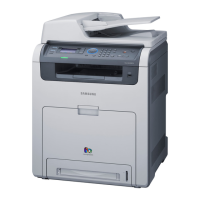
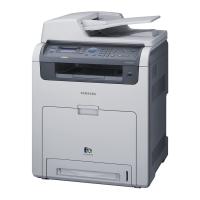

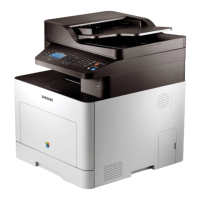
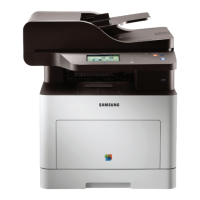


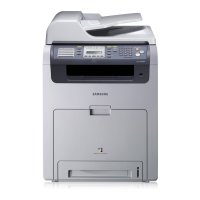
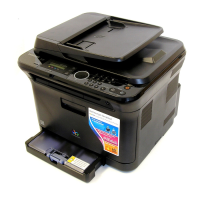
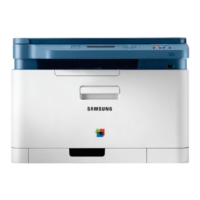
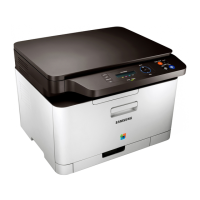

